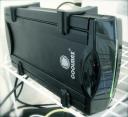Learning to Pick my Battles: Doing Less to Accomplish More
Thursday, September 13th, 2007I’ve had to make some difficult choices in the last few days.
Though it may not seem like it, this site represents a lot of time and effort; the haphazard design, confusing menus and utter lack of documentation mask a fairly complex and powerful back end. Unfortunately, it’s become clear that this complexity renders it more inefficient than I feared; even with no traffic there’s enough database activity to occasionally bring down the server.
Not coincidentally, these problems started just as my blogging efforts were finally getting underway… efforts which also revealed, in flashing neon visible from space, all the reasons that people use a professional content management packages. For one post, I had to add at least three new features: image uploads, thumnails and comments. Please remember that it was never my intention to build a content management system. Every feature on the site, including the blog, was supposed to be a proof-of-concept test for the underlying code.
That’s when it finally hit me how much work would be to get even minimally usable blogging code written. I wouldn’t be able to blog those efforts, or anything else, until I was finished; and even if I could half-ass it, the code still wouldn’t actually support any traffic… so it better not be good, or god-forbid, popular.
This put me in a funk.
Faced with the prospect of toiling indefinitely and having nothing to show for my efforts but a broke-ass pile of crap, I was forced to concede that there’s only one solution: I’m going to move to WordPress for content management.
Once I finally got the taste of defeat out of my mouth and over the urge to junk everything and move to Miami, I realized that this is actually a great option, and something I should have done a long time ago- it takes a number of things off my plate that I never wanted to do anyway, it removes the pressure of having to use my pre-alpha code to support an actual site, and it will give me a personal homepage I’m not ashamed of.
This is the perfect example of learning to pick my battles; by reducing the scope of what I’m working on, I should be able to accomplish quite a bit more.
Hopefully.





